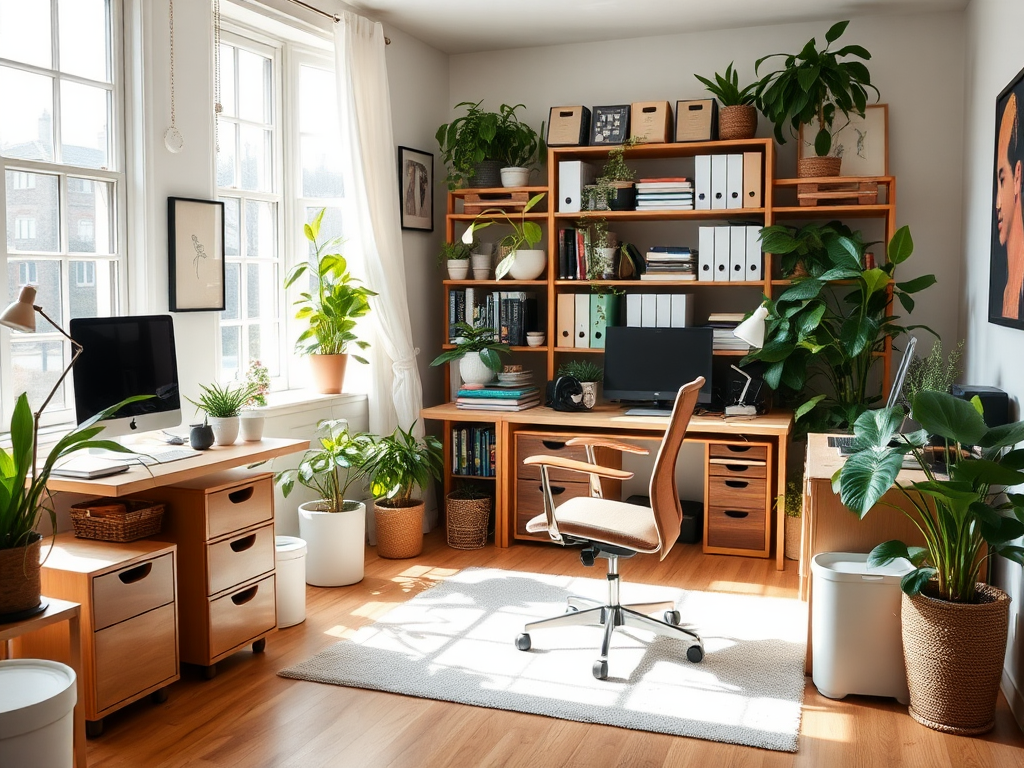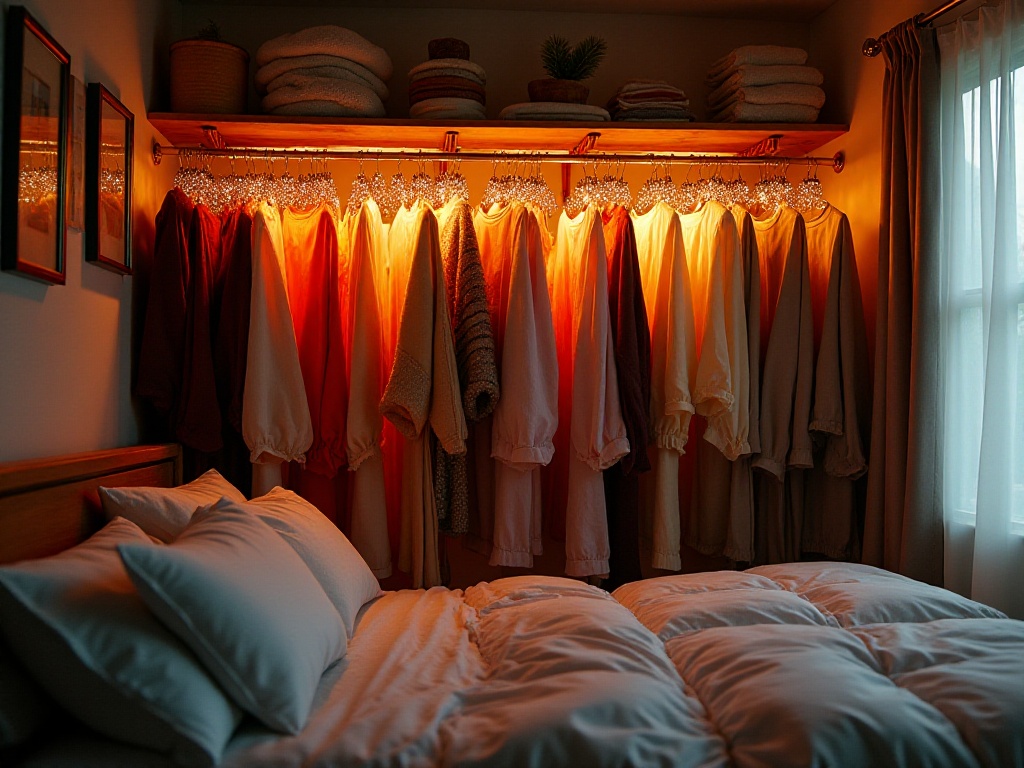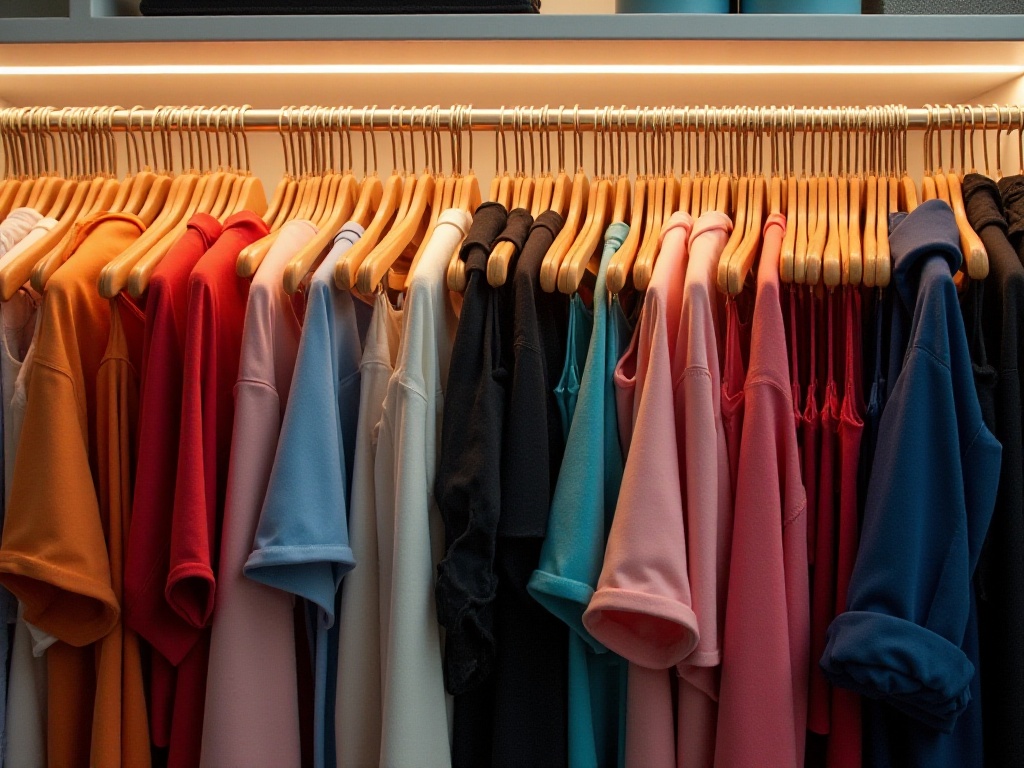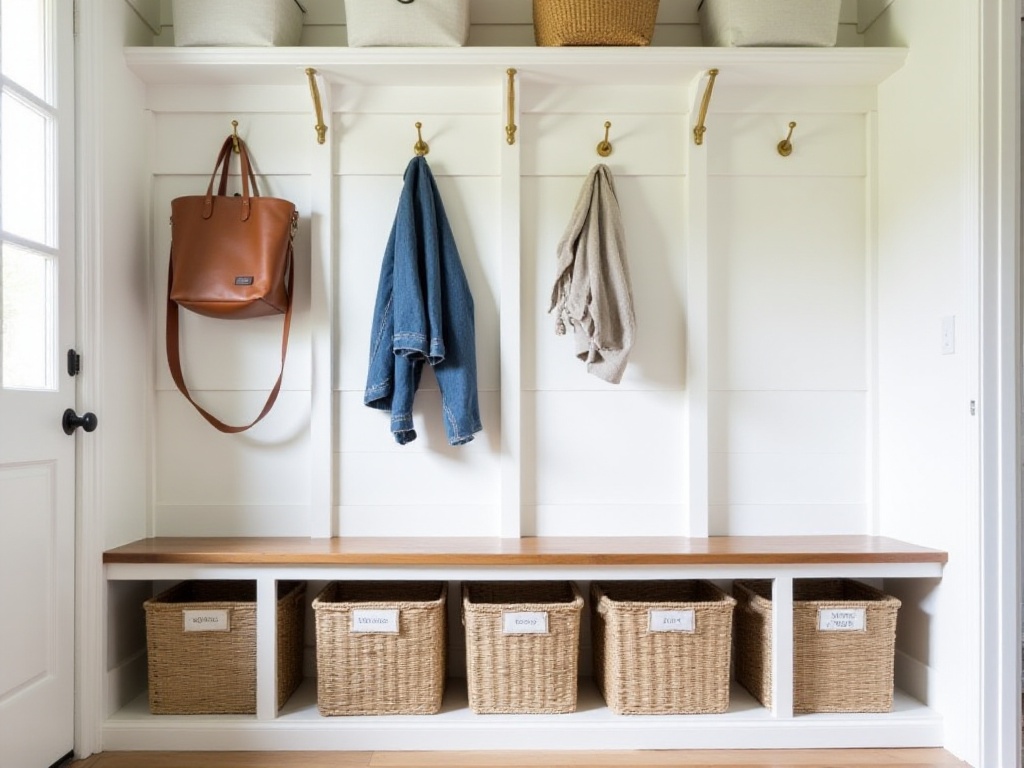Preface
I am an ordinary worker living in a 40-square-meter apartment. Every day after working overtime, seeing the mess of items scattered around drives me crazy. Takeout boxes, delivery packages, clothes and shoes are scattered in every corner, leaving no space to step. Lying in bed scrolling through my phone, seeing the tidy spaces shared by home organization influencers makes me envious, but I always felt it was impossible for me to achieve.
As a former organization novice, I deeply understand this feeling of helplessness. I remember once finding an unopened package from six months ago under my bed. After two years of exploration and practice, transforming from a hoarder to a space organization expert, I finally found a method that works for me. Today I want to share my complete experience with everyone, hoping to help others who are struggling with the same issues.
Mental Revolution
Before actually starting to organize, we need to discuss mindset first. I know many people get headaches at the mention of organizing, always feeling it's an extremely time-consuming task. Especially for those of us who work from 9 to 9, we just want to collapse when we get home, with no energy left for tidying up.
However, the most important aspect of organizing space isn't physical effort, but mindset. Like how I used to think I needed large chunks of time to start organizing, but it always ended up being all talk and no action. I would make weekend organizing plans, but kept postponing for various reasons. Only after I changed my mindset did I truly find a rhythm that worked for me.
My first important discovery was: don't expect to organize everything at once. I remember my "heroic deed" when I first started organizing, violently launching into deep cleaning mode one Saturday morning. I set myself a goal: today I must get the entire room perfectly clean and tidy. The result was that I worked until 2 AM, not only failing to achieve my expected goal but exhausting myself like a dog. When I woke up the next day and saw the room even messier than before, I nearly had a breakdown.
Later I got smarter and started breaking down organizing tasks into smaller goals. For example, today I would only organize the desk, tomorrow only the wardrobe, spending just 15-20 minutes each time. This way not only prevented exhaustion but maintained consistency. Gradually, I discovered this progressive organization method actually worked better, because completing each small goal gave me a sense of achievement, and this positive feedback motivated me to keep going.
The second enlightening concept was the "one in, one out" principle. I learned this from a Japanese organization expert while watching videos. The principle is simple: whenever you buy a new item, you must throw away or donate an old item. When I first started implementing this principle, I felt quite uncomfortable. After all, our generation tends to have some hoarding tendencies, always feeling items might be useful someday.
But when I truly started practicing this principle, I discovered its magic. For example, I particularly love buying clothes and often can't resist ordering when I see something nice on Taobao. Previously, when new clothes arrived, I would just stuff them into my already exploding wardrobe. Now I first check my wardrobe, pick out an old piece of clothing I haven't worn in a long time to recycle or donate, before allowing myself to buy new ones. This not only controls impulse purchases but also keeps my wardrobe within a reasonable capacity.
Since implementing the "one in, one out" principle, the total amount of items in my home has remained quite stable, and I no longer experience the previous situation where things would unconsciously pile up everywhere. More importantly, this principle has given me a clearer understanding of item selection. Not everything deserves to occupy our living space, and letting go of some things can be liberating.
Practical Techniques
After discussing the conceptual aspects, I'll now share some practical experiences. First, the most basic and important thing is to categorize properly.
Many people's first reaction to organizing is to buy storage boxes. However, before purchasing any storage tools, we should first conduct a thorough inventory of items. This process might surprise you. Based on my experience, nearly 40% of items in an average household can be directly cleared out.
I'll never forget the scene of my first item inventory. I dumped everything out into the middle of the living room, and the scene was shocking. Just expired cosmetics alone filled a large box, with some skincare products that had gone bad but I was still keeping. There were also various things that "might be useful later": textbooks from seven or eight years ago, unused data cables, gifts received but never used... When I truly examined these items, I realized their "cost" of occupying space far exceeded their value.
After completing the inventory, the next step is space planning. This point is particularly important, but many people overlook it. I found most people focus on horizontal surfaces when organizing, like desktops and bedside tables. However, utilizing vertical space is actually key to improving storage efficiency.
Take my room for example - the wall space was completely empty, which was quite wasteful. Later I bought several wall-mounted storage racks online and installed them on the walls. This modification had an immediate effect, instantly creating nearly 3 square meters of additional storage space. I've researched some home design materials, and if vertical space is properly utilized, a room's storage capacity can increase by about 60%. Now my walls are hung with various storage racks, which are not only practical but also look quite stylish.
Speaking of storage containers, I most recommend transparent storage boxes. At first, I also used opaque fabric storage boxes, which looked nice, but after using them for a while, I found them very inconvenient. Because you can't see what's inside, you have to open and search through the box every time you need something, which ends up messing up the organized items.
After switching to transparent storage boxes, I felt my whole life became easier. Not only can you see what's inside at a glance, but retrieving items is also very convenient. Plus, transparent storage boxes have an unexpected benefit: they make the space look tidier visually. Because transparent materials don't make the space look heavy, the overall appearance is more open and clear.
When purchasing storage boxes, I suggest not just pursuing the cheapest options. Common storage boxes on the market typically last 3-5 years, and if you buy poor quality materials, they might deform or break before long. I recommend choosing products with sturdy materials - although the initial investment is higher, it's more economical in the long run.
Key Challenges
Next, I'll address the clothing storage issue that many people find particularly troublesome. As someone whose clothes used to pile up like mountains, I can deeply relate. After countless trials and failures, I finally found a method that works for me.
First, I categorize all clothing according to frequency of use: daily wear, seasonal items, and special occasion wear. This categorization method sounds simple, but actually implementing it requires some techniques. I discovered that the clothes we actually wear regularly only account for about 20% of all our clothing, which was shocking to me.
For example, when I analyzed my clothes, I found some items I hadn't worn for over a year but couldn't bear to throw away. Later I realized, rather than letting these clothes occupy precious closet space, it's better to store them away or simply donate them. Now my closet only contains my most frequently worn clothes, and I no longer have decision paralysis when choosing clothes in the morning.
For seasonal clothing, I use vacuum compression bags. This method is really useful, not only saving lots of space but also preventing insects and moisture. I remember being amazed the first time I used compression bags for winter clothing. Down jackets and sweaters that originally took up half the closet only occupied one drawer after compression. Plus, when the season changes, you just need to open the compression bags and air out the clothes to restore them to their original state.
For special occasion clothing, like formal wear or wedding attire, I hang them separately in dust covers. Although these clothes aren't worn frequently, they're usually quite expensive, so they need proper protection. I've designated a small area in my closet for hanging these clothes, keeping them covered with dust bags and ready to use when needed.
Managing electronic device cables is another headache. I believe many people have a pile of data cables and chargers at home, but often can't find them when needed, yet they're everywhere when not in use. I used to frequently stress about finding charging cables, and sometimes when I finally found them, they were all tangled together, which was incredibly frustrating.
Later I came up with a particularly cost-effective and practical method: using toilet paper rolls to store various charging cables. The specific approach is to collect used toilet paper rolls, label them with things like "iPhone charging cable," "Type-C data cable," etc. After organizing each cable, place it in the corresponding paper roll, then stand all the rolls upright in a drawer. This not only prevents cables from tangling but also makes them easy to find.
This method costs almost nothing but works surprisingly well. Based on my experience, a regular charging cable might develop breaks or contact problems within a year if stored carelessly. But with proper storage and protection, the same cable can last two years or longer.
Continuous Improvement
Establishing a good storage system is just the first step; maintaining it is more important. Many people might have this experience: finally getting the room perfectly clean and tidy, only to have it return to its original state not long after. This shows that having a good storage system alone is not enough; you need to develop habits of continuous organization.
My suggestion is to cultivate a habit of spending 10 minutes organizing each day. This isn't a long time, but the effect is very noticeable. I usually choose to do this before bed, putting away items scattered during the day and tidying up the bed and desk surfaces. This way, seeing a clean environment when I wake up the next day puts me in a good mood.
The changes this habit has brought me are obvious. Previously, I would always be frantically searching for things in the morning, but now every item has a fixed place, and my morning preparation time has been cut in half. According to some research data, people living in organized environments can increase work efficiency by about 25% and reduce stress levels by 30%. I deeply relate to these numbers because since developing the habit of daily organization, I've clearly felt my quality of life improve.
Besides daily organization, I have another trick: establishing a "waiting to be processed" area at home. This idea came from realizing that many temporary items often disrupt the existing storage system. Things like received delivery packages, documents that need processing, items to be returned or exchanged, etc., can easily end up randomly placed if there's no fixed area for them.
I specifically set up a small corner near the entrance as a waiting area, using a simple storage basket. All items needing temporary placement go here first, then are processed together every weekend. This way, important matters won't be missed, and the overall tidiness of the home is maintained.
This method is particularly suitable for busy office workers like us. For example, I often shop online, and sometimes when I receive items I'm not satisfied with and want to return them, but don't have time to deal with it immediately. Previously, these items would end up in some corner, and I'd often remember them only after the return period had expired. Now with the waiting area, all such matters can be handled in a timely manner.
Epilogue
After these two years of exploration and practice, my living space has undergone a dramatic transformation. Changing from a hoarder to a living space management expert, this transformation has brought me not just a clean living environment, but an overall improvement in quality of life.
Every day when I return home and see items neatly arranged in their proper places, my mood improves significantly. No more worrying about not finding things, no more letting a messy environment affect my mood. Now, I can truly enjoy every moment at home.
Organization isn't the goal; making life better is our ultimate pursuit. Through these methods, I found my own way of organizing, and I hope those reading this article can gain some inspiration from it. Remember, change starts now, starts from one small corner. I look forward to you finding your own organizing method and making life more beautiful.
Remember, everyone's lifestyle is unique, and there are no universal rules for storage. What's important is to continuously adjust and optimize through practice to find the most suitable method for yourself. Organizing space is an ongoing process, but once you start taking action, you'll be pleasantly surprised to discover that change is actually quite simple.







